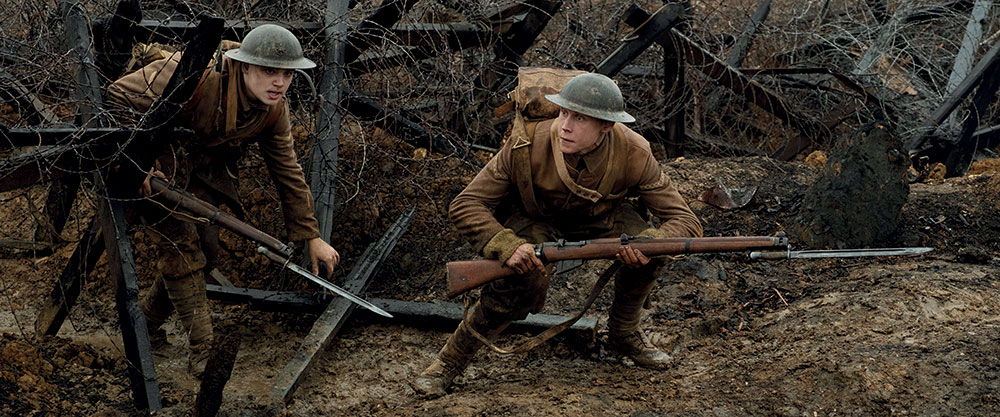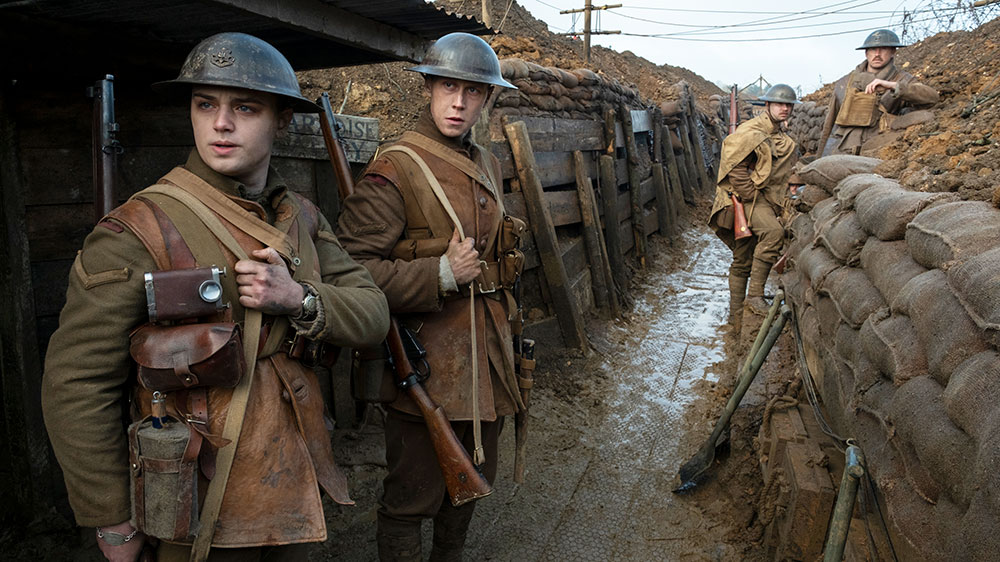Sam Mendes’ WWI-themed 1917 looks and sounds amazing, making for a truly visceral viewing experience. Its single-take format is technically remarkable, though it suffers from a lack of character development.
1917 follows the story of two British soldiers sent on a deadly mission across enemy lines by foot to warn their compatriots about an ambush they’re about to walk into. Failure to deliver the warning message will result in over a thousand allied deaths.
The premise is a simple one and director Sam Mendes relies on it to carry the weight of his film. 1917 is all about the soldiers’ journey through enemy territory, as our protagonists, played by Dean-Charles Chapman and Charles MacKay, must carefully cross treacherous landscapes, dodge booby traps, and avoid enemy soldiers as they make their way to reach their fellow troopers. Mendes captures the immense difficulty of the task authentically, putting the audience in the back-seat on the drive through this dangerous mission. With each setback our leads face, we too feel it. Such is the power of the single-take format that the director has opted to go for in guiding the narrative.
Naturally, the film is not shot in a true single take, with many moments evident of where a clever cut may have been used to give off the illusion of one. It’s handled with perfection, however, and shooting it in this way keeps the audience engaged all throughout, as there’s rarely a moment of reflection or to catch one’s breath. The benefit of the single-take style in a warzone setting is that the film can build and keep a high intensity. The trade-off, however, is that there’s no easy way to develop a character’s backstory outside of just verbalizing one, which feels like a cheap way to do it.

Chapman and MacKay are perfectly cast and give excellent performances. The pair play off each other well and the camaraderie between them feels genuine. Despite this, it’s hard to get emotionally attached to either character. 1917 relies too heavily on providing tense moments of action without building up the characters in advance, so when there is a moment of despair involving the main characters, the audience is put in an awkward position of being made to feel as if they should care, but deep down they actually may not.
Where the film is at its strongest is in its technical aspects. Renowned cinematographer Roger Deakins has captured the essence of what WWI may have looked and felt like stunningly, and the score by Thomas Newman, in conjunction with the overall sound design makes for a genuinely immersive viewing experience. 1917 does well in providing a unique take on a WWI-themed film, though, for all its amazing technical trickery, it lacks heart in a story that may have been better handled in the hands of someone like Spielberg, who’s mastered all aspects of a riveting war film.
Fun Fact:
Sections of the film were shot in and around Low Force, on the River Tees, Teesdale in June 2019. The production staff had to install signs warning walkers in the area not be alarmed by the bodies strewn around the site as they were prosthetic.




COMMENTS